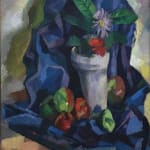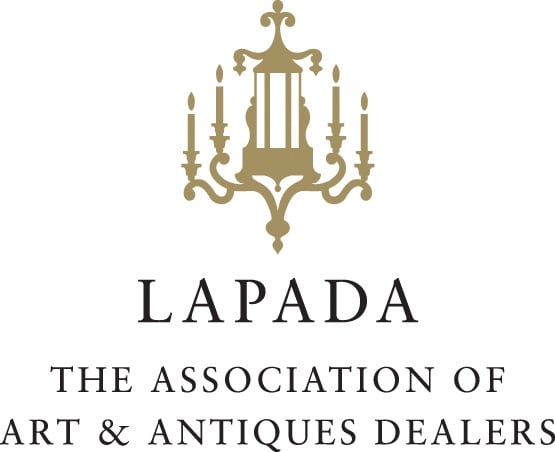Mark Gertler 1891-1939
Framed: 85.5 x 75.5 cm.; 33½ x 29¾ in.
Mark Gertler was born in London to poor Polish- Jewish immigrants and through raw talent, force of will and patronage, he became one of the most significant British painters of his generation. After successfully enrolling at the Slade School of Art, he distinguished himself amongst an incredibly talented generation, which included Augustus John, Stanley Spencer, Paul Nash and CRW Nevinson, who declared him ‘the genius of the place’ (Paint and Prejudice, 1937).
The present still-life, painted in 1917, belongs to a critical period in Gertler’s oeuvre when some of his boldest and most radical works were created, most famously Merry-Go-Round (Tate Collection, 1916). Among his contemporaries, Gertler was arguably the most European-orientated, and Still Life reveals the dominant influence of Cezanne at this time. He was simultaneously occupied with a large and complex composition, Bathers (1917-18, private collection) that equally responded to the visual challenges laid down by Cezanne. As Gertler stated, ‘The entry of Cezanne, Gauguin, Matisse etc., upon my horizon was equivalent to the impact of the scientists of this age upon a simple student of Sir Isaac Newton’ (Studio, September 1932).
In the painting, fragmented strokes of colour are used to build form and substance akin to Cezanne, by which he developed Impressionism’s daubs of light and laid the foundations for Picasso’s Cubism. Gertler’s bold palette and simplification of forms make for a particularly striking image, made more arresting still by the deliberate ‘missing’ edge of the flowerpot and apple at its base. This conscious decision adds a psychological charge to the work. Painted during the First World War and on the back of Merry-Go-Round, his biting War-critique, Gertler was at this time confronting existential angst, as well as battling ill-health from tuberculosis and the distress of his unrequited love for Dora Carrington. The work appears to rotate and shift, defying easy interpretation and like many of the greatest artworks, presents more questions than answers.
Gertler painted the work while staying at Garsington Manor, his patron Lady Ottoline Morrell’s artistic enclave in Oxfordshire. It is quite probable he had with him Ambrose Vollard’s book on Cezanne, which Roger Fry had reviewed earlier that year. Gertler and Fry had met at the Omega Workshops in April 1917 (who found him ‘a most rare and refreshing thing’), and it proved a formative and lasting encounter. The following month Fry had asked Gertler to an exhibition of translations of past masters by contemporary artists and Gertler responded with a ‘Yiddish Cezanne’, a still life of fruit and flowers against a rumpled blue cloth. In September 1917 Clive Bell wrote from Garsington that Gertler had just shown him four pictures painted there that summer, ‘They are really very interesting and superbly conscientious; I don’t think there is anyone in England but Duncan [Grant] who can do better. All are under the influence of Cezanne.’
At its exhibition in 1917, Dora Carrington wrote to Gertler, ‘I want to tell you how very much I liked your Still-Lifes in the London Group. Especially the big one with drapery making a shape.’ Given Gertler’s complicated relationship with Carrington that in part shaped the composition of the present work, it must have been a bittersweet moment of acknowledgement. Still Life stands as a pivotal work, a pioneering British painting that also stands on level terms with the Continent’s modern masters.
Provenance
Jas Wood, 1917
Sotheby’s, London, 18 June 1997, lot 72
Private Collection
Exhibitions
Mansard Gallery, London Group, November 1917, no. 45
London, Piano Nobile, Mark Gertler Works 1912-28: A Tremendous Show of Vitality, 2012, no. 13
Literature
John Woodeson, Mark Gertler – Biography of a Painter, 1891-1939, Sidgwick & Jackson, London,1972, p.368
Join our mailing list
Be the first to hear about our upcoming exhibitions, events and news
* denotes required fields
We will process the personal data you have supplied to communicate with you in accordance with our Privacy Policy. You can unsubscribe or change your preferences at any time by clicking the link in our emails.




